How To Build Clay Pinch Pot Animals
Kids, clay, pinch pots and animals all go hand in hand. Normally all children love sculpting and creating their own clay animal pinch pot. In this post, we will show you how to create your own easy ceramic elephant clay sculpture.

Disclosure: We only recommend products we would use ourselves and all opinions expressed are our own. This post may contain affiliate links when clicked, we may earn a small commission at no additional cost to you. Read our full privacy policy.
What age is this project good for?
We have done this project with 4th graders and older. Previous knowledge of how to attach clay will be beneficial. The biggest challenge to this clay elephant is that they have to create balance to get the elephant to stand on its feet. Some children may need a little extra assistance with this.
What is scoring?
In clay, you score or make small lines to the pieces you are attaching. This helps the pieces attach together.

Why do you not use slip with kids?
In 14 years, the method of just scoring and adding water has worked very well for these simple clay art ideas. The biggest reason this would not work is if your clay is not moist enough. Fresh clay or normally even clay from the previous year should work.
You can have students blend the seams with their fingers to help make sure items won’t fall off.
How to glaze your clay elephant?
We like using a simple color for this project. You can let children use as many glaze colors as possible, but this clay build looks awesome with just one color like Moody Blue glaze. Just make sure they glaze everywhere with 3 coats of glaze except the bottom of the feet.
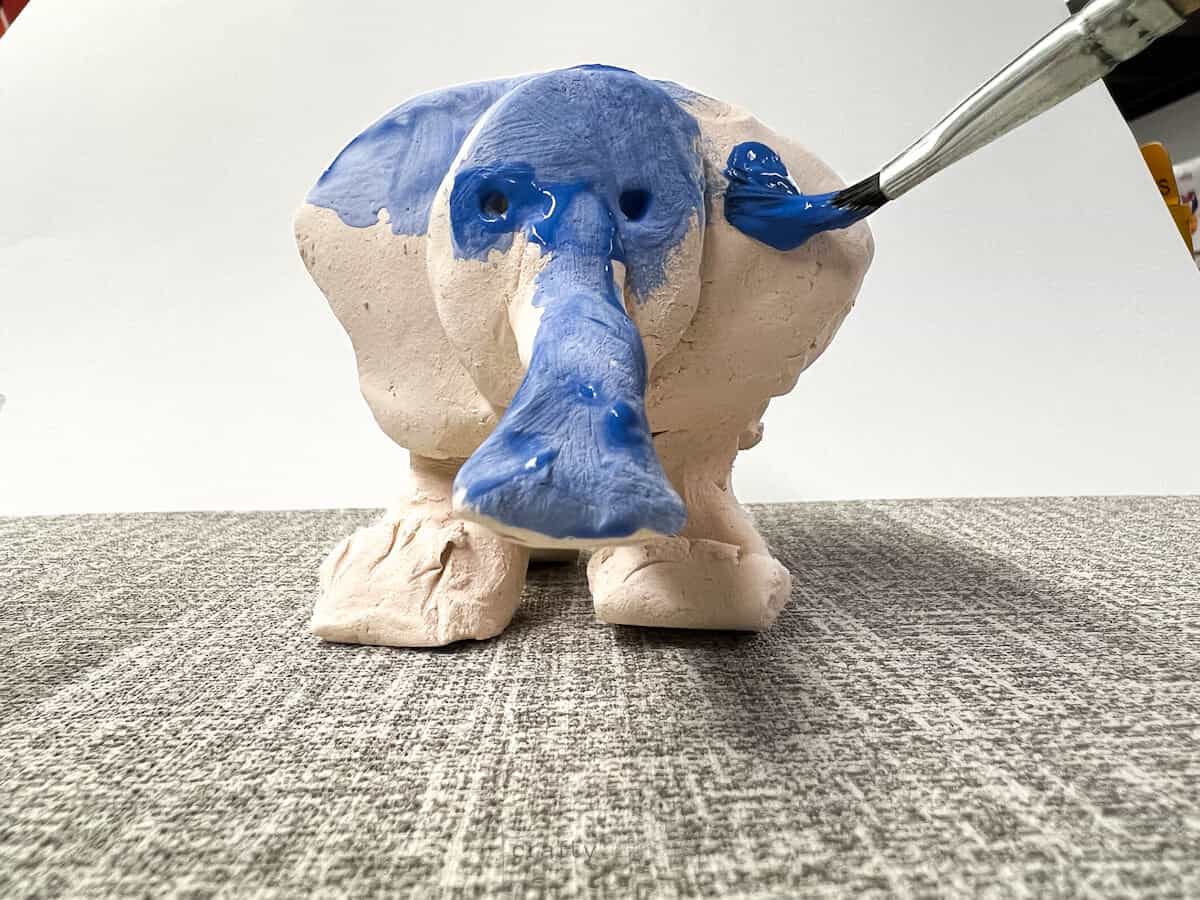
Do you have to build an elephant?
Absolutely not. Older children should be able to come up with their own animal pinch pot idea. First, I would have them create at least 3 different sketches. The hardest part for kids during this project is getting their clay project to stand.
Therefore, if a kid is struggling you can help them change the design to have the animal lay down so that the pinch pot is touching the table. Naturally, a few of their designs may do this and it will make it easier.
Concepts Needed Before Beginning
- how to score and “slip” to attach the clay together
- not to make clay details too thick or too thin
- blending seams with fingers to help ensure attachment
- using a little water to help smooth out rough or dry areas
Step-by-Step Instructions
Step 1: Split Clay
Start with a larger ball of clay that can fit inside a child’s hand. Split a little bit off the hunk of clay. The bigger chunk of clay can be rolled into a ball.
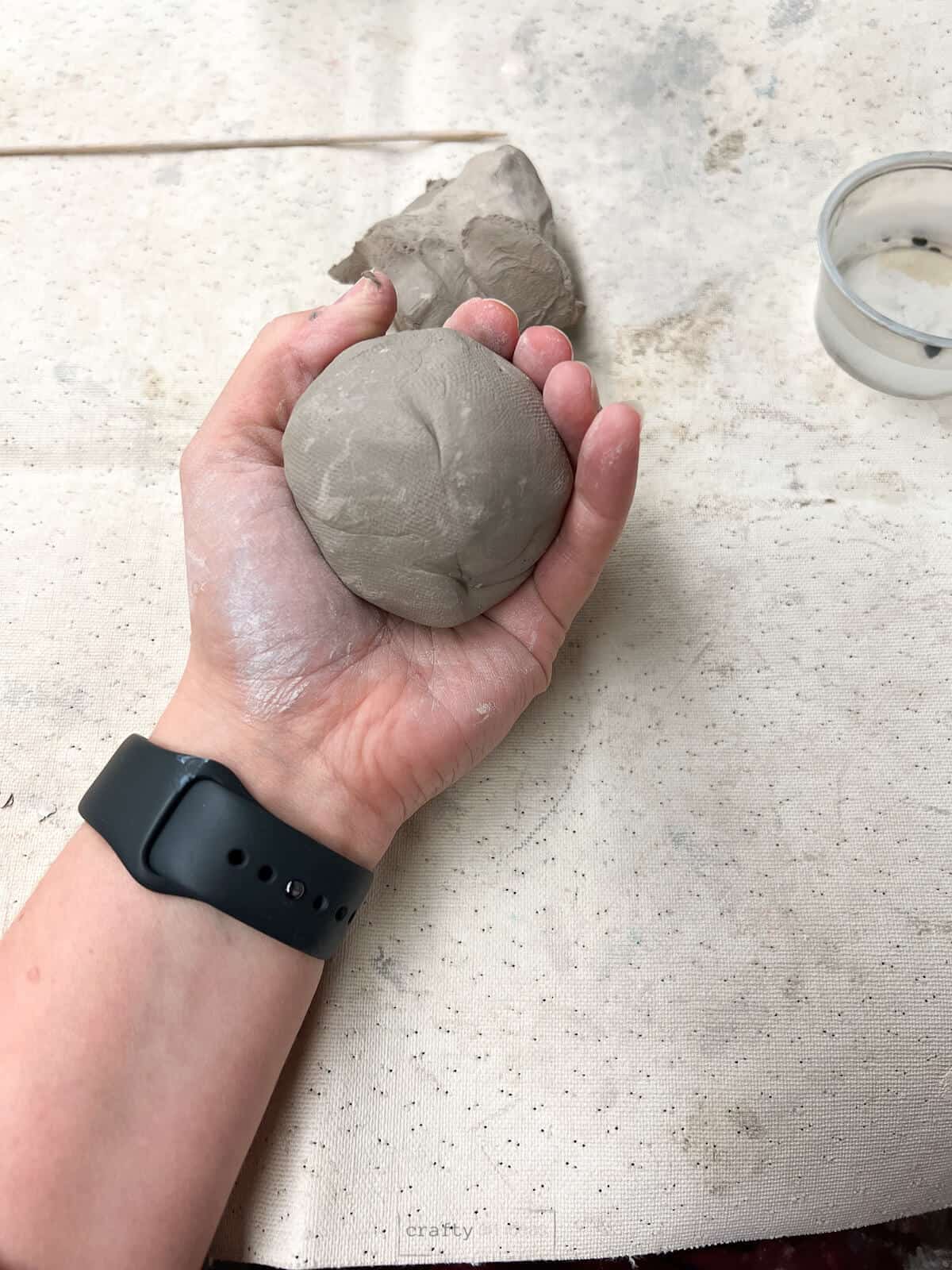
Step 2: Make A Pinch Pot Base
Have kids push 4 holes with their thumbs as far as they can go without going through.
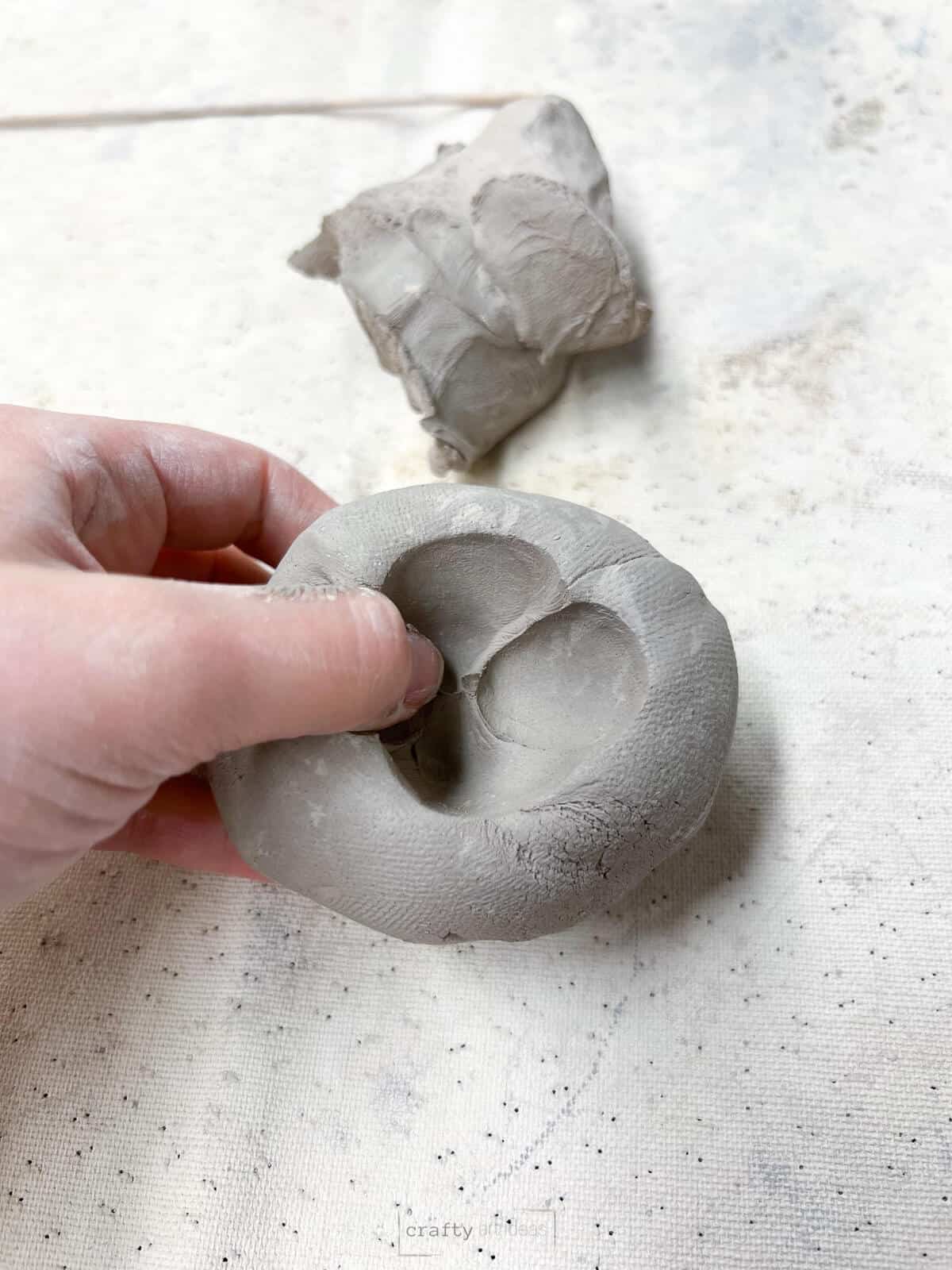
Use your hands to pinch around the edge and make sure not to make walls too thin. The walls should probably be around 1/8” thick to support the shell when flipped on its side.

Kids can squeeze the shape of their pinch pot to make it a little longer like an actual body of an animal.
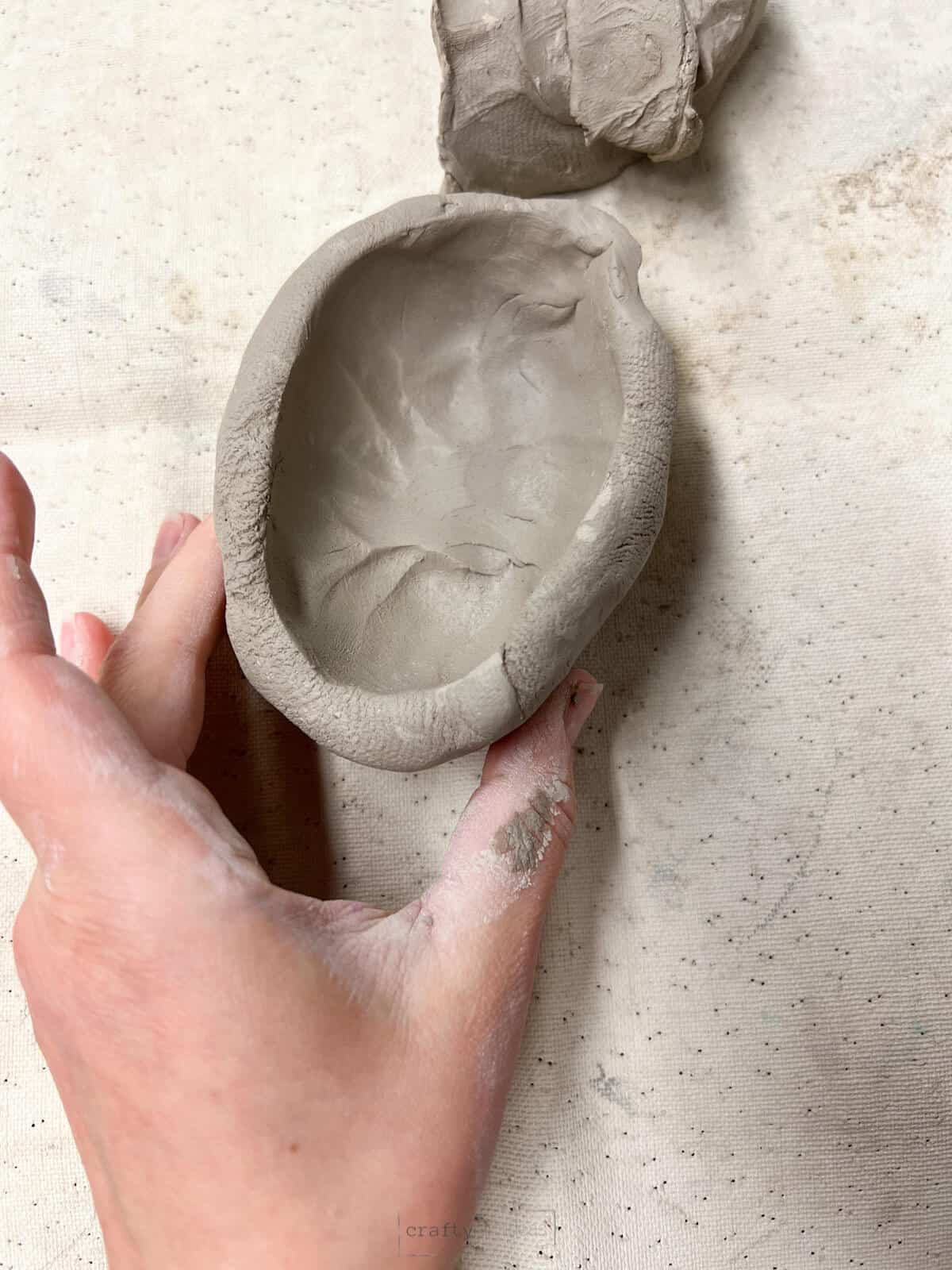
Step 3: Create Slab Ears
Begin creating the head of your elephant by creating a small slab with some of the extra clay. Use a wooden skewer to cut out the basic ear shape.
This will also be the base to attach the head and trunk.
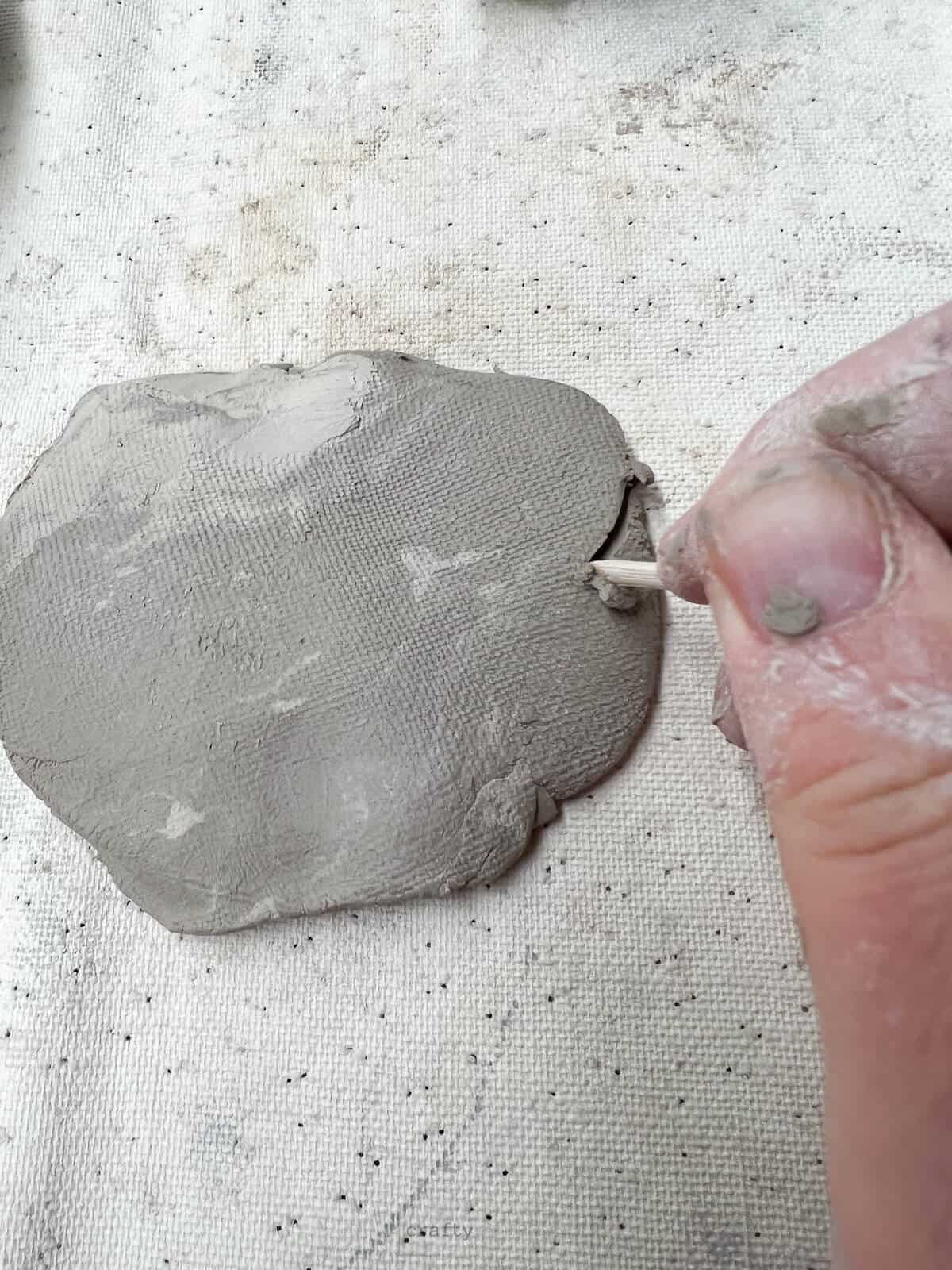
Step 4: Build Head & Trunk
Construct a head and trunk out of more clay.
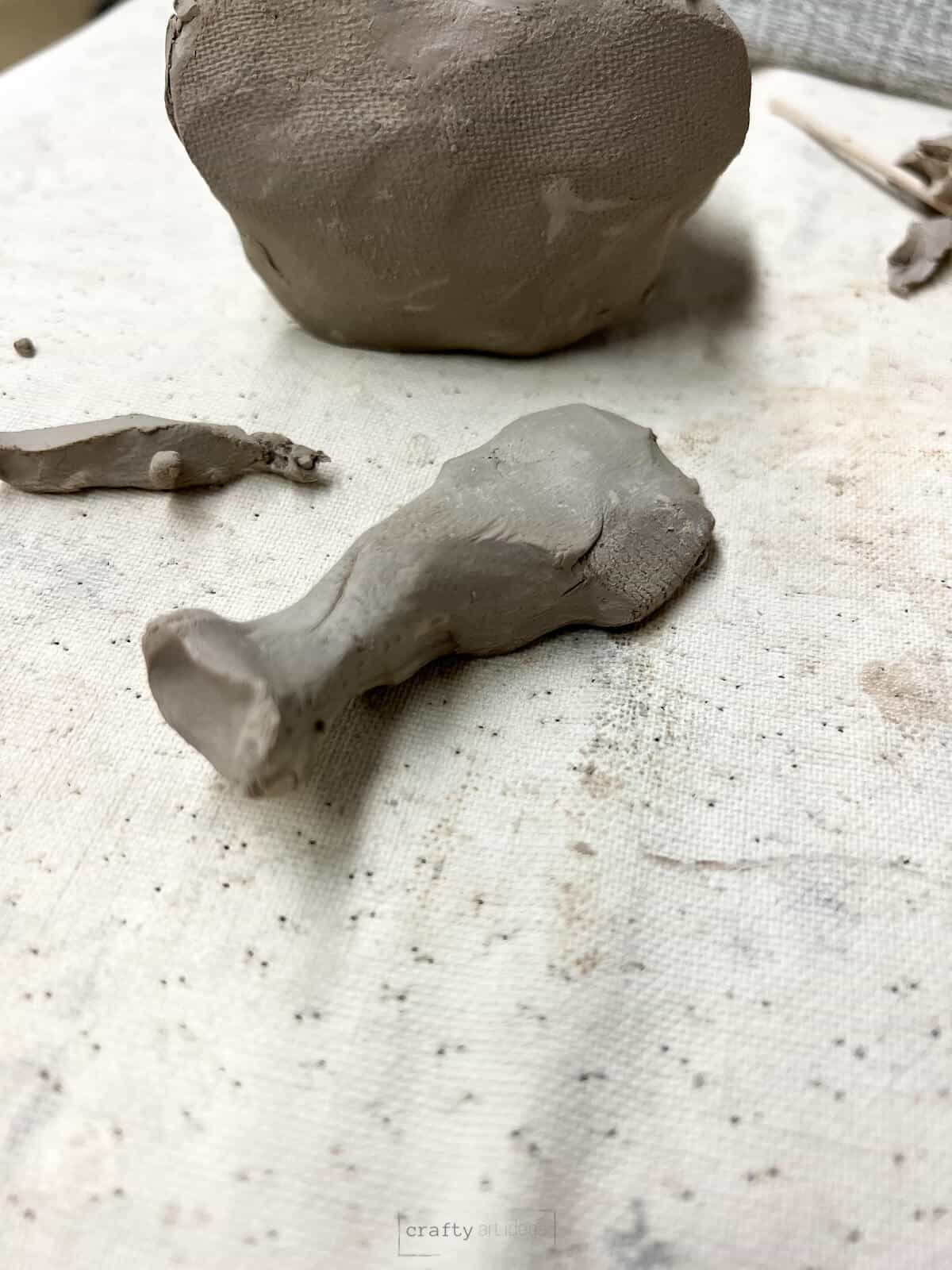
Step 5: Continue Sculpting Trunk & Head
Use a skewer and fingers to pinch the end of the trunk for a more realistic feel.

Step 6: Score And Attach The Head & Trunk
Add score lines to the back of the head and elephant ears. Use a little water to create “fake slip” and attach the head and trunk. Follow the same scoring method with water to attach the head to the pinch pot.
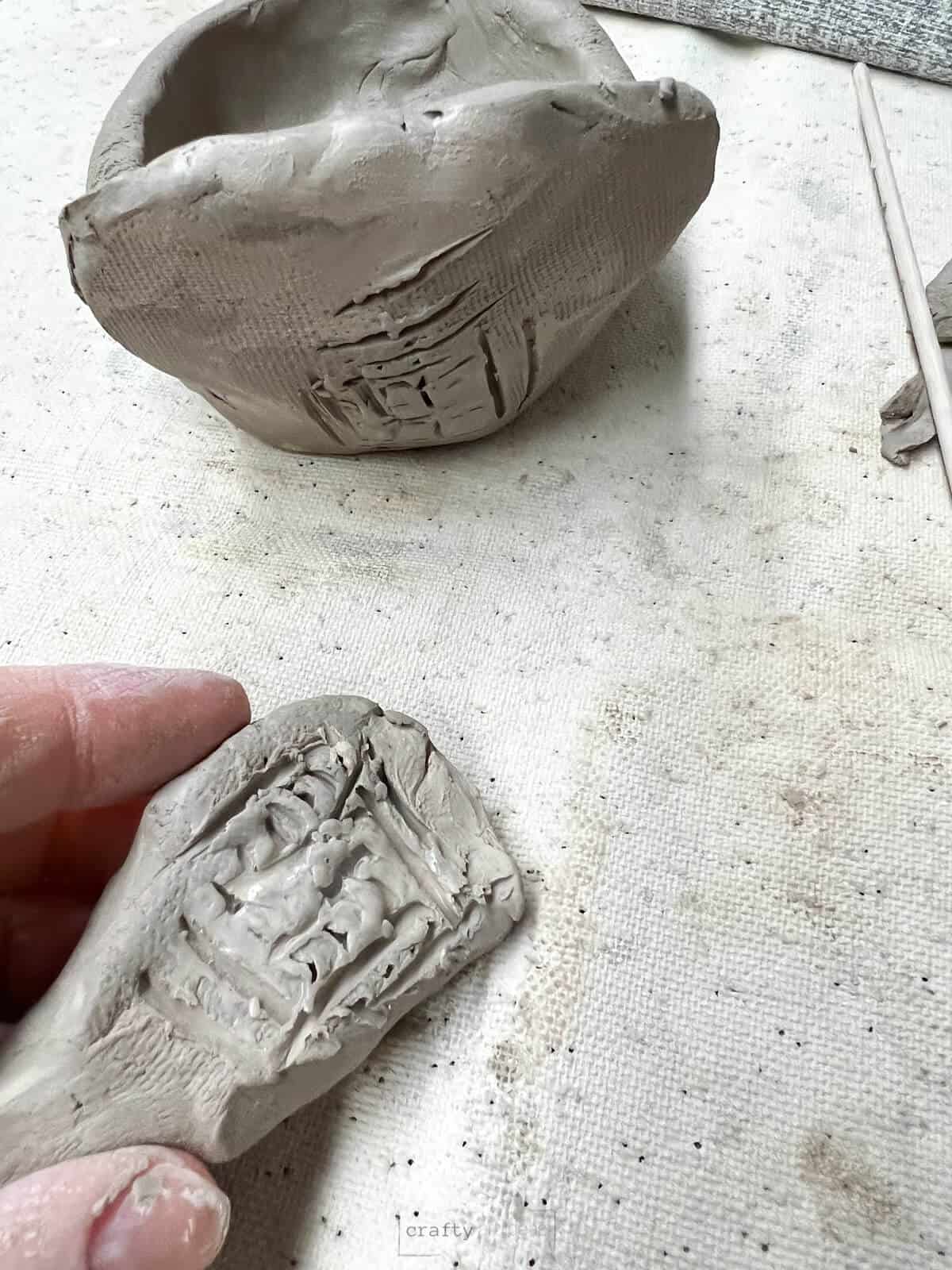
Step 7: Build Elephant Feet
Carefully flip the clay project over. We supported our elephant with paper towels so that we could work on making clay feet without smashing the head.
Build similar sized clay feet that will be able to support the weight of your clay pinch pot and head.

Step 8: Attach Feet By Scoring
Attach clay feet to the bottom of your pinch pot. Make sure that you put the front feet as far up the pinch pot as possible.

Step 9: Blend Clay Seam With Finger
Make sure the clay legs are attached completely. Blending the seam with your finger should help.
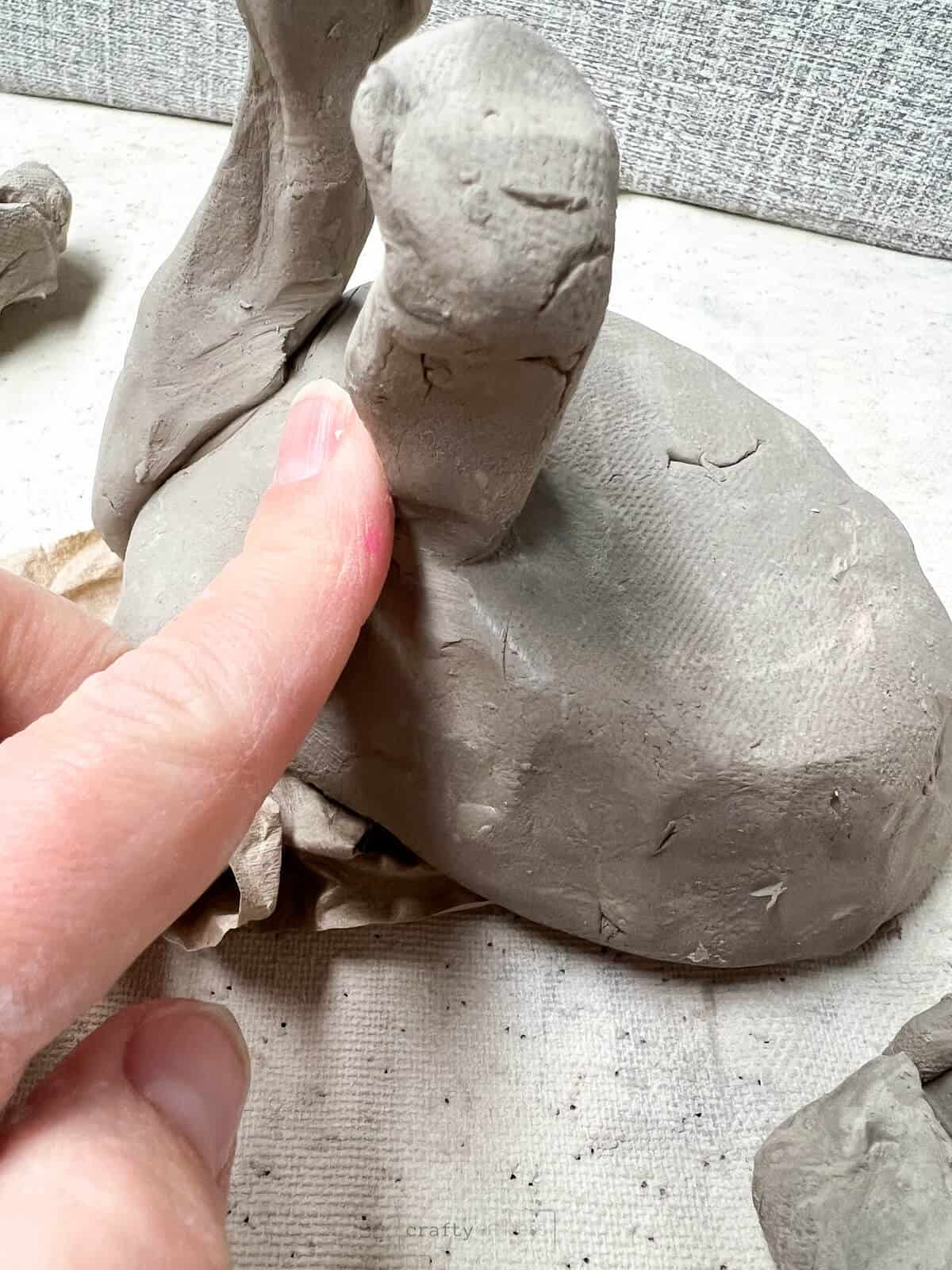
Step 10: Check For Balance
Once all feet are attached well, flip the clay elephant over and adjust the feet as needed to balance the weight.
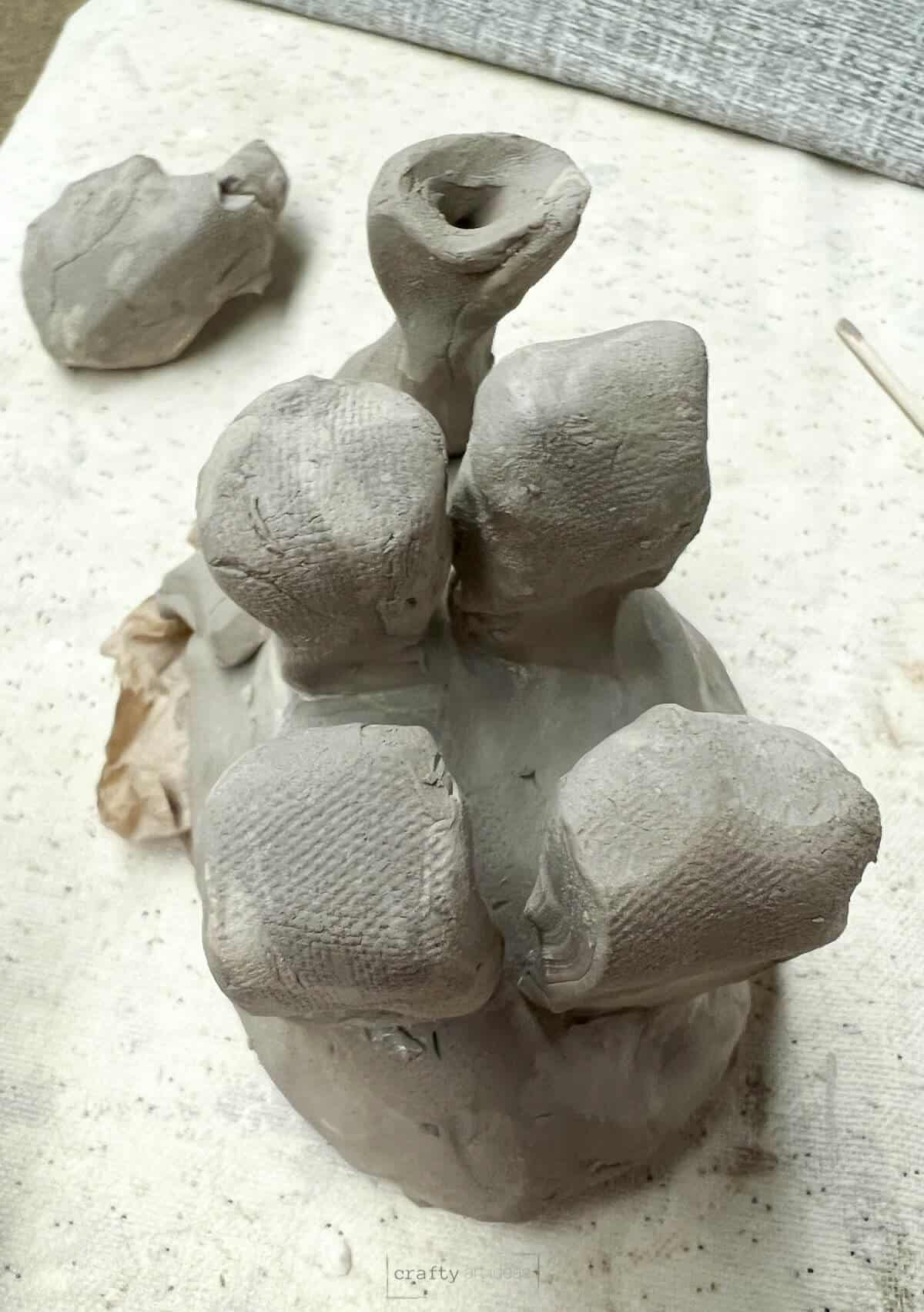
The ends or feet of your elephant may become a little larger, but that works if it is supporting the weight.
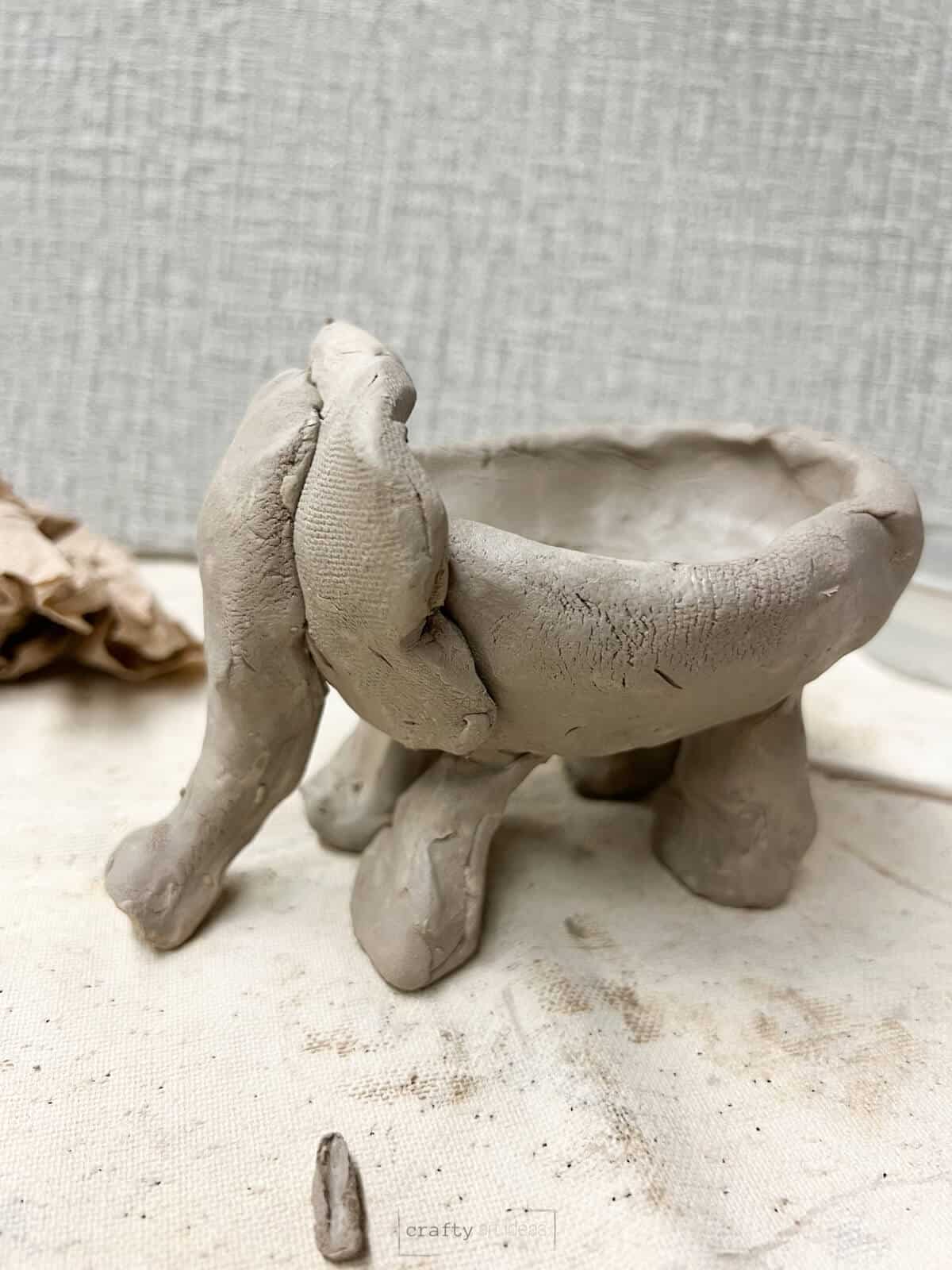
Step 11: Adding Finishing Touches
Kids can use water to smooth out any rough areas and add details such as eyes. We always instruct them that a little goes a long way and to not make “mud pie”.
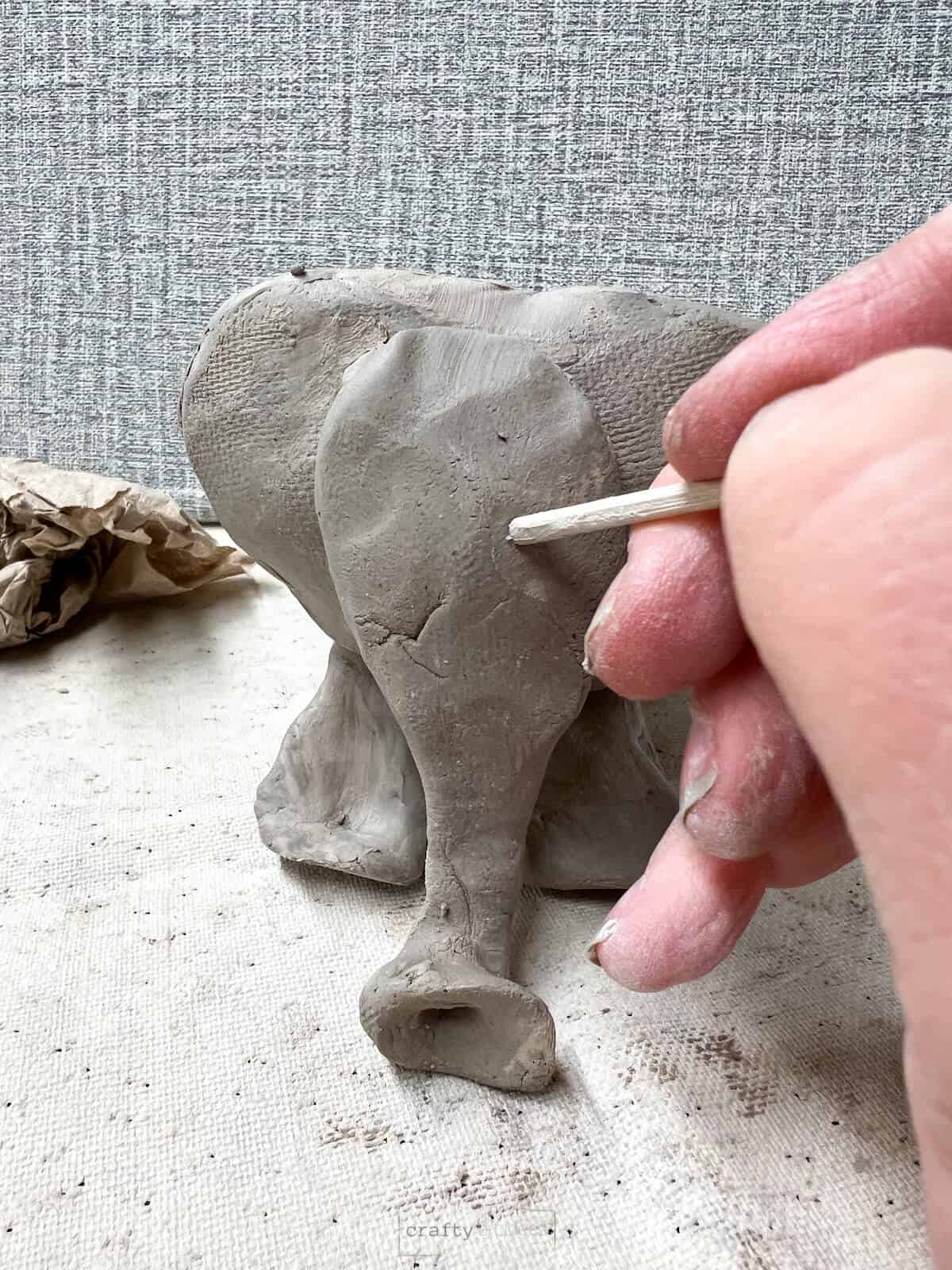
Step 12: Add Initials or Name To The Bottom
An adult should write the kid’s name on the bottom of the pinch pot with a sharp skewer or needle tool.

Step 13: Let Dry And Bisque Fire
Let dry for about a week. Once the clay is not cool to the touch, run a bisque fire in your kiln.
Step 14: Add Color
Glaze bisque-fired clay or paint. We used Mayco Stroke and Coat in Moody Blue. The simplistic nature of just using one color works well for this ceramic project. However, it is really up to the artist to make that decision.
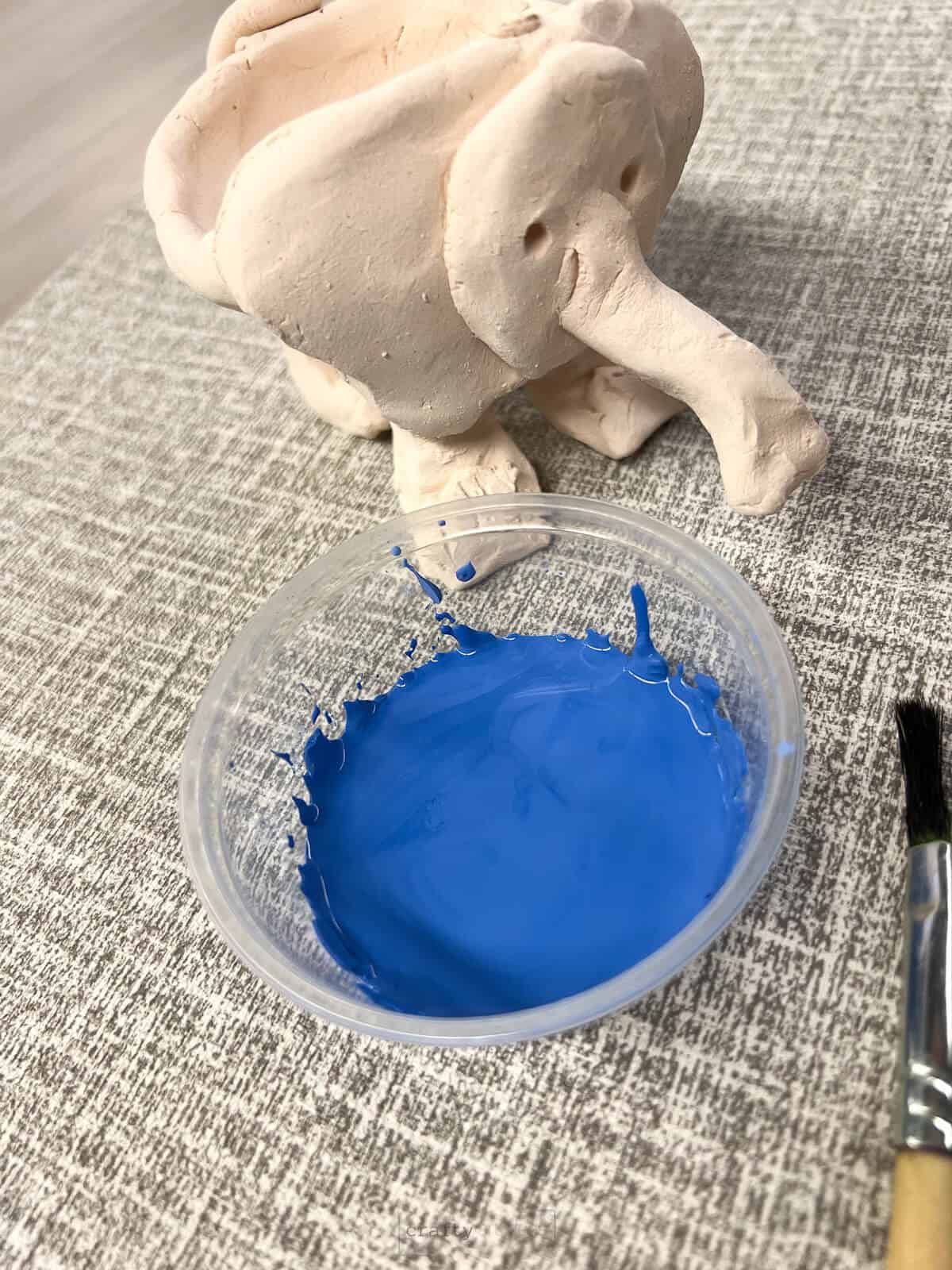
Get our tips for using clay glaze in the art room.

Not only is your clay elephant awesome, but kids can store their trinkets and fun things in the pinch pot animal body.
Follow us on Pinterest, YouTube, Facebook & Flipboard for more free art and craft ideas!
Related Projects
- Clay Pinch Pot Flower: A perfect first clay project for beginners.
- Fun Clay Monster Art Lesson For Kids
- Easy Clay Cat Art Lesson
Do you like this art project? Please give us 5 stars below 🤩🤩🤩🤩🤩 and have fun being creative with your family.
Clay Pinch Pot Animal
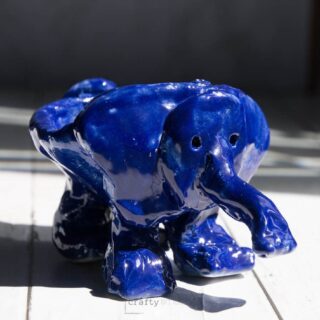
Equipment
- Wooden Skewer
- Work Surface or placemat
- Small container of water
Supplies
- White Low-Fire Art Clay
- Clay Glaze
Instructions
- Start with a larger ball of clay that can fit inside a child’s hand.
- Split a little bit off the hunk of clay. The bigger chunk of clay can be rolled into a ball.
- Have kids push one hole with their thumbs as far as they can go without going through.
- Use hands to pinch around the edge and make sure not to make walls too thin. The walls should probably be around 1/8” thick to support the shell when flipped on its side.
- Kids can squeeze the shape of their pinch pot to make it a little longer like an actual body of an animal.
- Begin creating the head of your elephant by creating a small slab with some of the extra clay. Use a wooden skewer to cut out the basic ear shape.
- Construct a head and trunk out of more clay. Use a skewer and fingers to pinch the end of the trunk for a more realistic feel.
- Add score lines to the back of the head and elephant ears. Use a little water to create “fake slip” and attach the head and trunk.
- Follow the same scoring method with water to attach the head to the pinch pot.
- Carefully flip the clay pinich pot over. We supported our elephant with paper towels so that we could work on making clay feet without smashing the head.
- Build similar sized clay feet that will be able to support the weight of your clay pinch pot and head.
- Attach clay feet to the bottom of your pinch pot. Make sure that you put the front feet as far up the pinch pot as possible.
- Flip the clay elephant over and adjust the feet as needed to balance the weight. The ends or feet of your elephant may become a little larger, but that works if it is supporting the weight.
- Kids can use water to smooth out any rough areas. We always instruct them that a little goes a long way and to not make “mud pie”.
Notes
- If building a different pinch pot animal, create at least 3 different sketches before beginning.
- The hardest part for kids during this project is getting their clay project to stand. Therefore, if a child is having difficulty consider creating an animal that is laying down with its feet out in front.
- An adult should write the kid’s name or initials on the bottom of the pinch pot with a sharp skewer or needle tool.

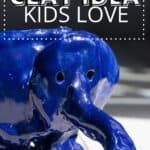
I just love the idea! I will try to make one soon with yellow color as I love yellows! Ty Erin.